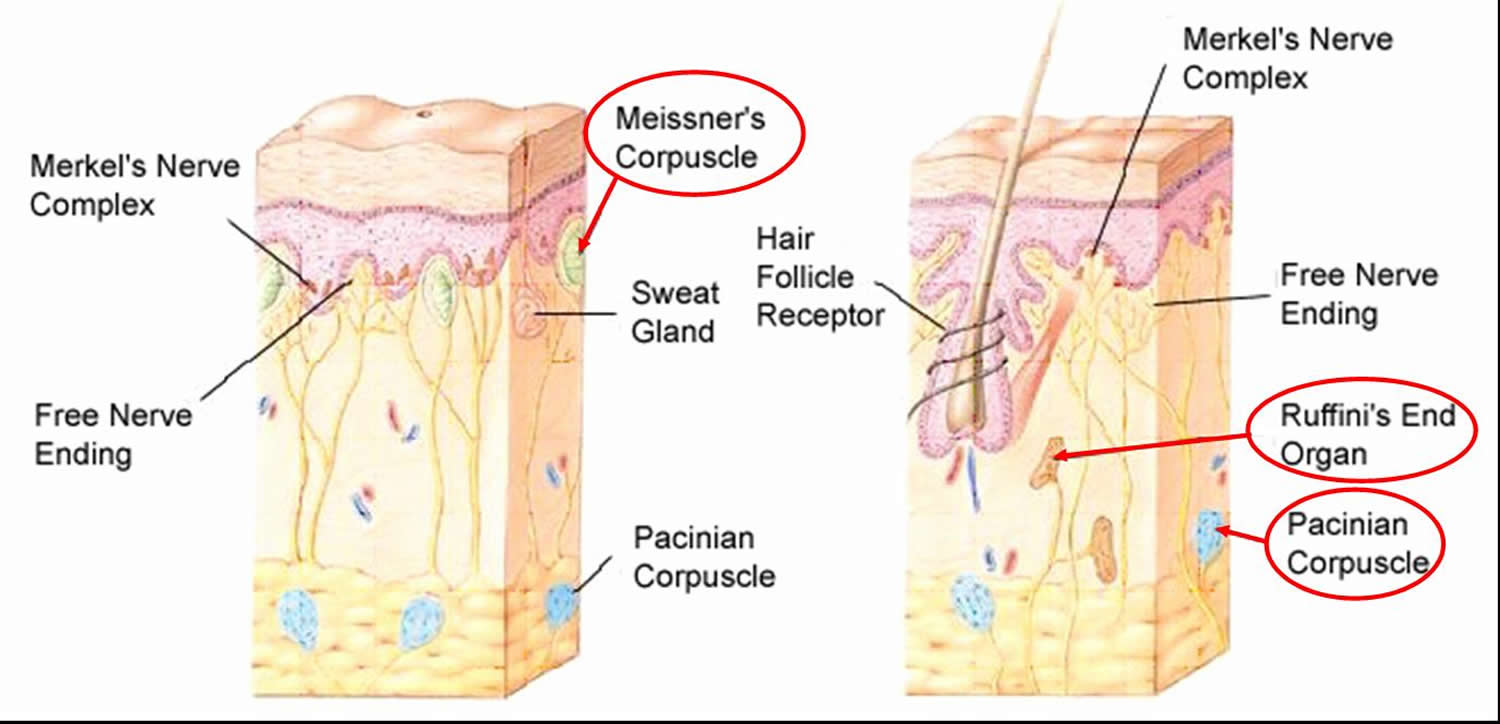
Sensory Nervous System Organs and Functions
A free nerve ending, as its name implies, is an unencapsulated dendrite of a sensory neuron. Free nerve endings are the most common nerve endings in skin, and they extend into the middle of the epidermis. Free nerve endings are sensitive to painful stimuli, to hot and cold, and to light touch.
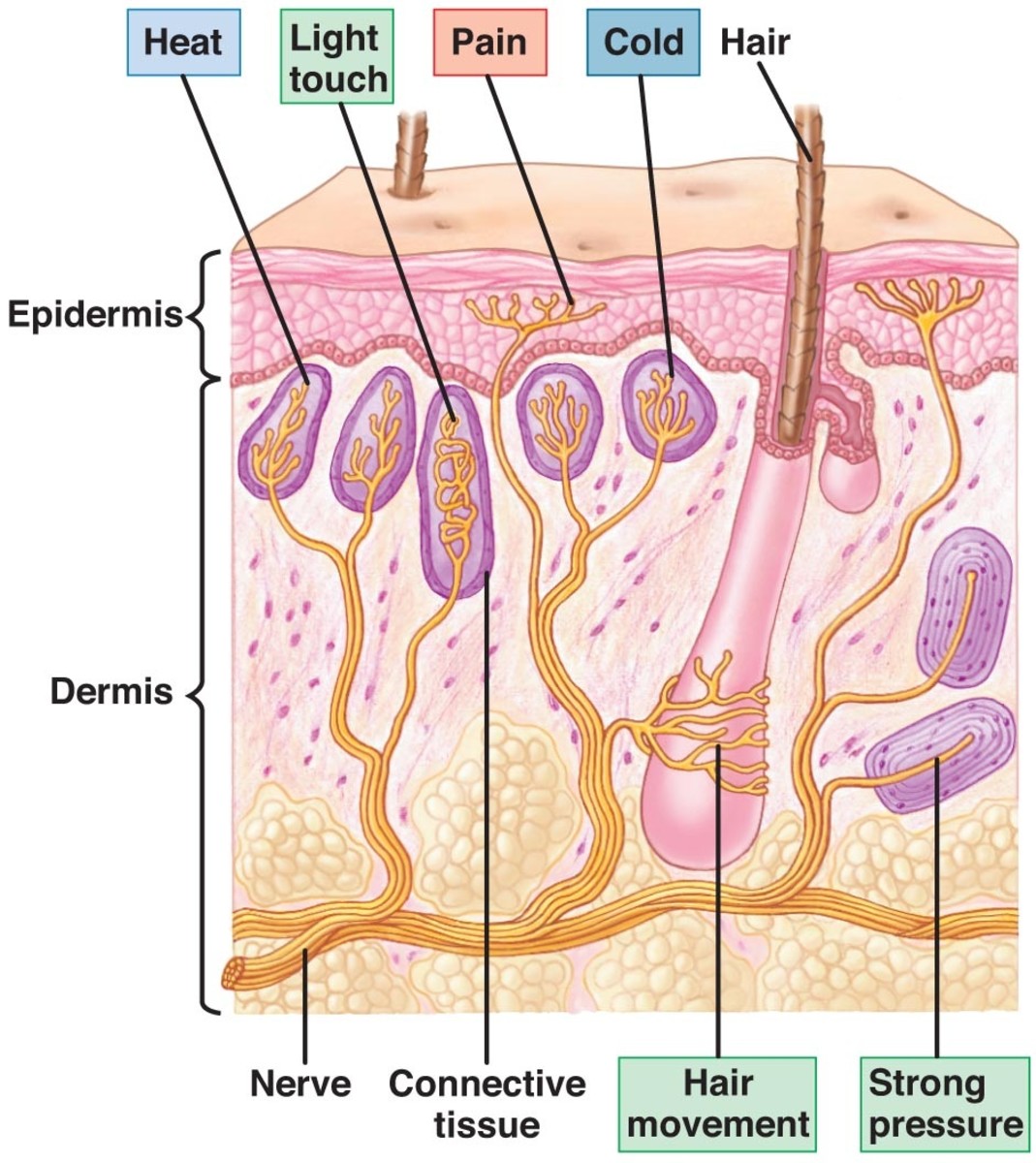
Did You Know That "Spicy" is Not a Taste? Owlcation
The cold receptors present on free nerve endings, that can be either lightly-myelinated or unmyelinated, have a maximum sensitivity at ~ 27°C and will signal temperatures above 17°C. The warm receptors present on free nerve endings are unmyelinated fibers that have a maximum senstivity of ~45°C and will signal temperature above 30°C.
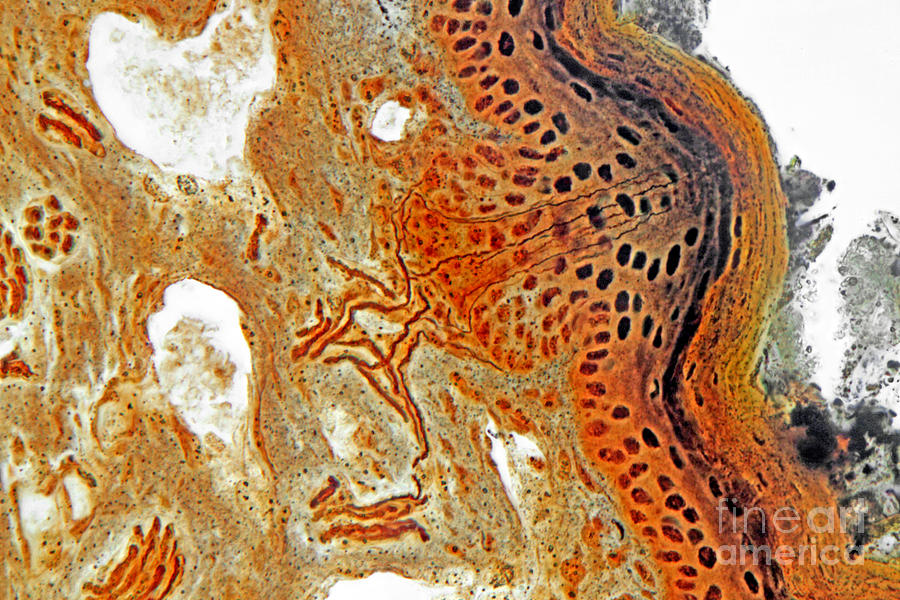
Free Nerveendings, Epidermis by M. I. Walker
A free nerve ending is an unencapsulated dendrite of a sensory neuron; they are the most common nerve endings in skin. Free nerve endings are sensitive to painful stimuli, to hot and cold, and to light touch. They are slow to adjust to a stimulus and so are less sensitive to abrupt changes in stimulation.
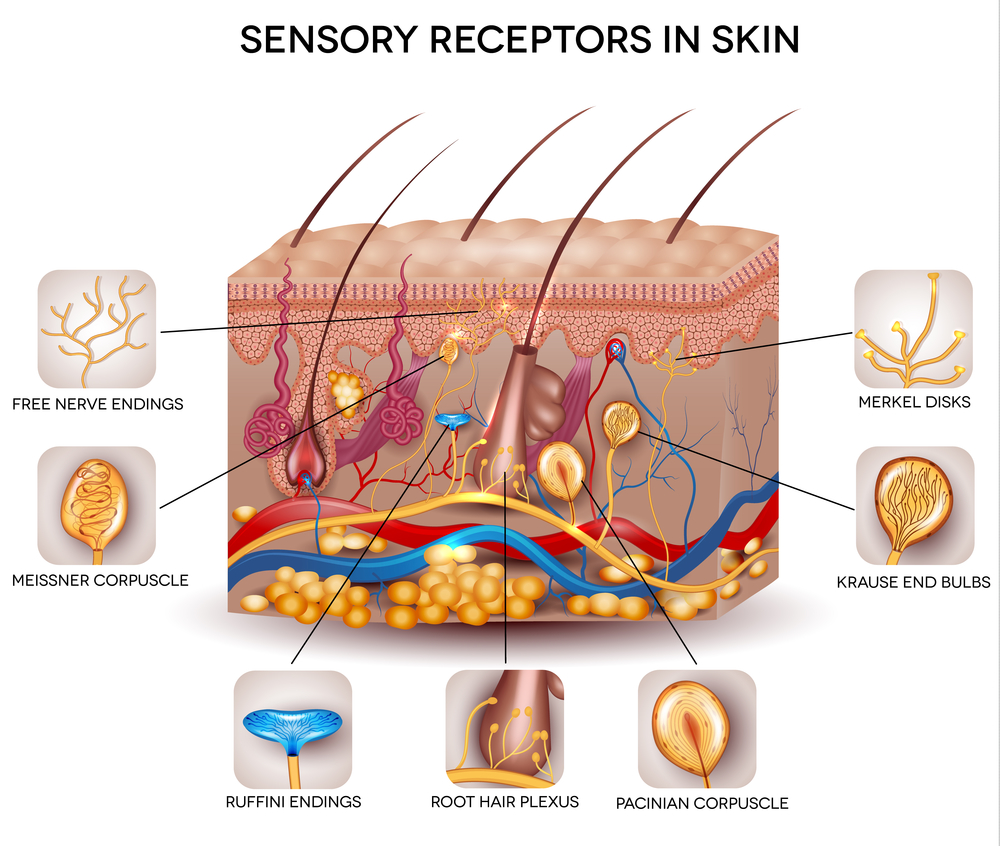
organizerdrop Blog
A free nerve ending, as its name implies, is an unencapsulated dendrite of a sensory neuron. Free nerve endings are the most common nerve endings in skin, and they extend into the middle of the epidermis. Free nerve endings are sensitive to painful stimuli, to hot and cold, and to light touch..
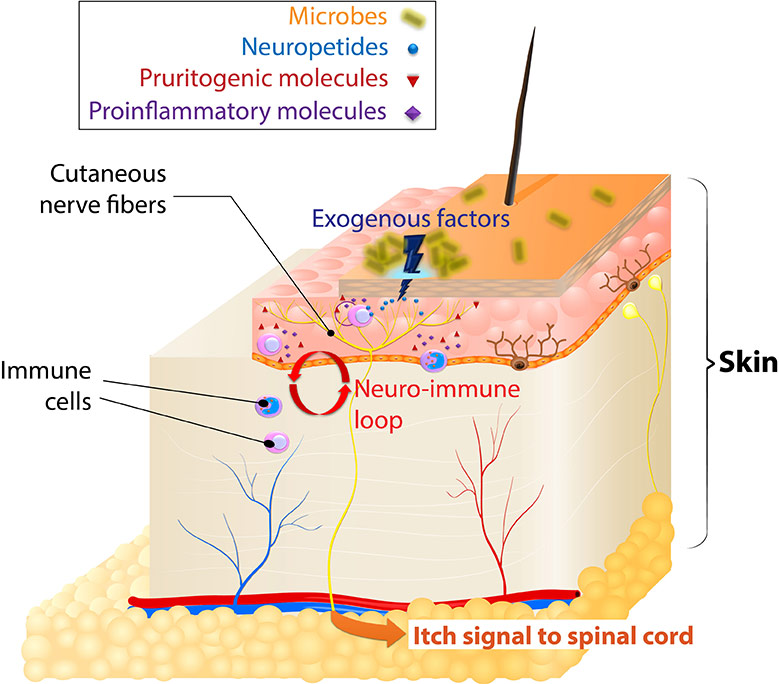
The Science Dermaxon
Define sensory receptor. Define transduction, perception, sensation, and adaptation. Distinguish between tonic and phasic receptors. Compare and contrast the types of sensory receptors based on the type of stimulus (i.e., thermoreceptor, photoreceptor, chemoreceptor, baroreceptor, nociceptor [pain receptor], mechanoreceptor).
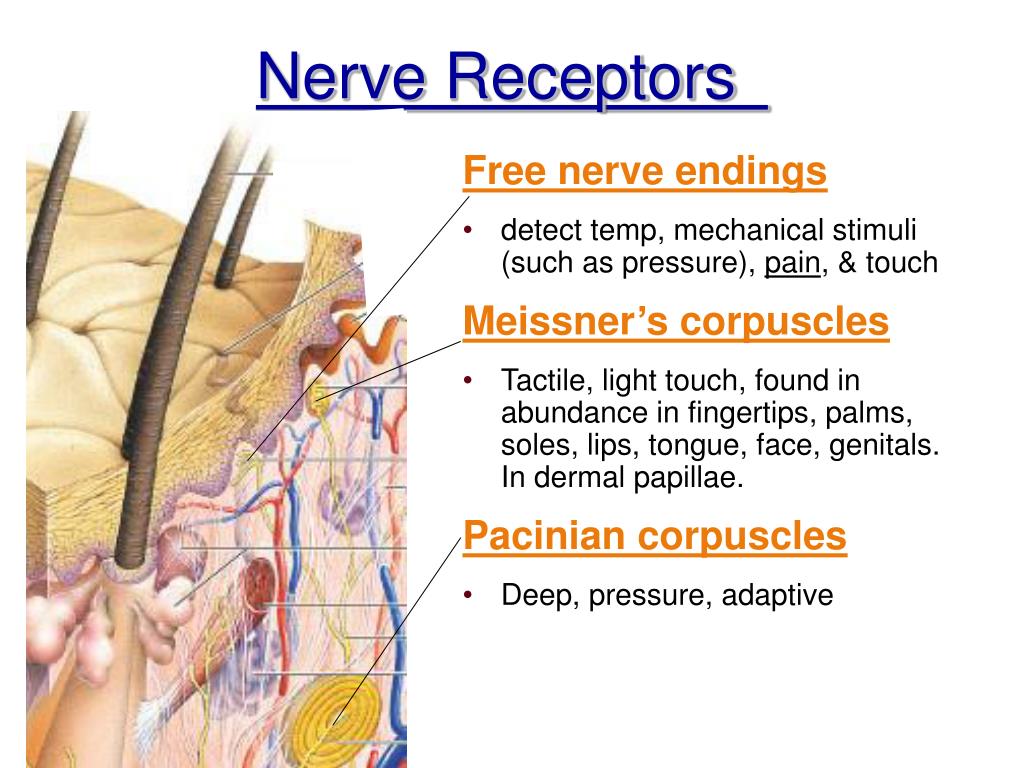
PPT Chapter 4 Skin and Body Membranes “The Dermis” PowerPoint Presentation ID602793
A free nerve ending ( FNE) or bare nerve ending, is an unspecialized, afferent nerve fiber sending its signal to a sensory neuron. Afferent in this case means bringing information from the body's periphery toward the brain.

Free Nerve Endings Stock Image P350/0089 Science Photo Library
A free nerve ending, as its name implies, is an unencapsulated dendrite of a sensory neuron. Free nerve endings are the most common nerve endings in skin, and they extend into the middle of the epidermis. Free nerve endings are sensitive to painful stimuli, to hot and cold, and to light touch..

Figure 1 from Peripheral Mechanisms of Itch. Semantic Scholar
Free nerve endings begin development at roughly seven weeks gestation, during a period where the laminar structure of the thalamus or cortex has yet to mature. Histological studies of human fetuses suggest that thalamic projections into the cortical plate typically develop around 23 to 30 week's gestation age. The typical hormonal.

Difference Between Free Nerve Endings and Encapsulated Compare the Difference Between Similar
free nerve ending n. in A Dictionary of Psychology (3) Length: 80 words View all related items in Oxford Reference » Search for: 'free nerve ending' in Oxford Reference »

Intraepidermal free nerve endings. The epidermis is innervated by... Download Scientific Diagram
The pain and temperature receptors in the dermis of the skin are examples of neurons that have free nerve endings. Also located in the dermis of the skin are lamellated corpuscles, neurons with encapsulated nerve endings that respond to pressure and touch.

free nerve ending vs nonfree nerve endings YouTube
Nociceptors often referred to as your "pain receptors," are free nerve endings located all over the body, including the skin, muscles, joints, bones, and internal organs. They play a pivotal role in how you feel and react to pain.
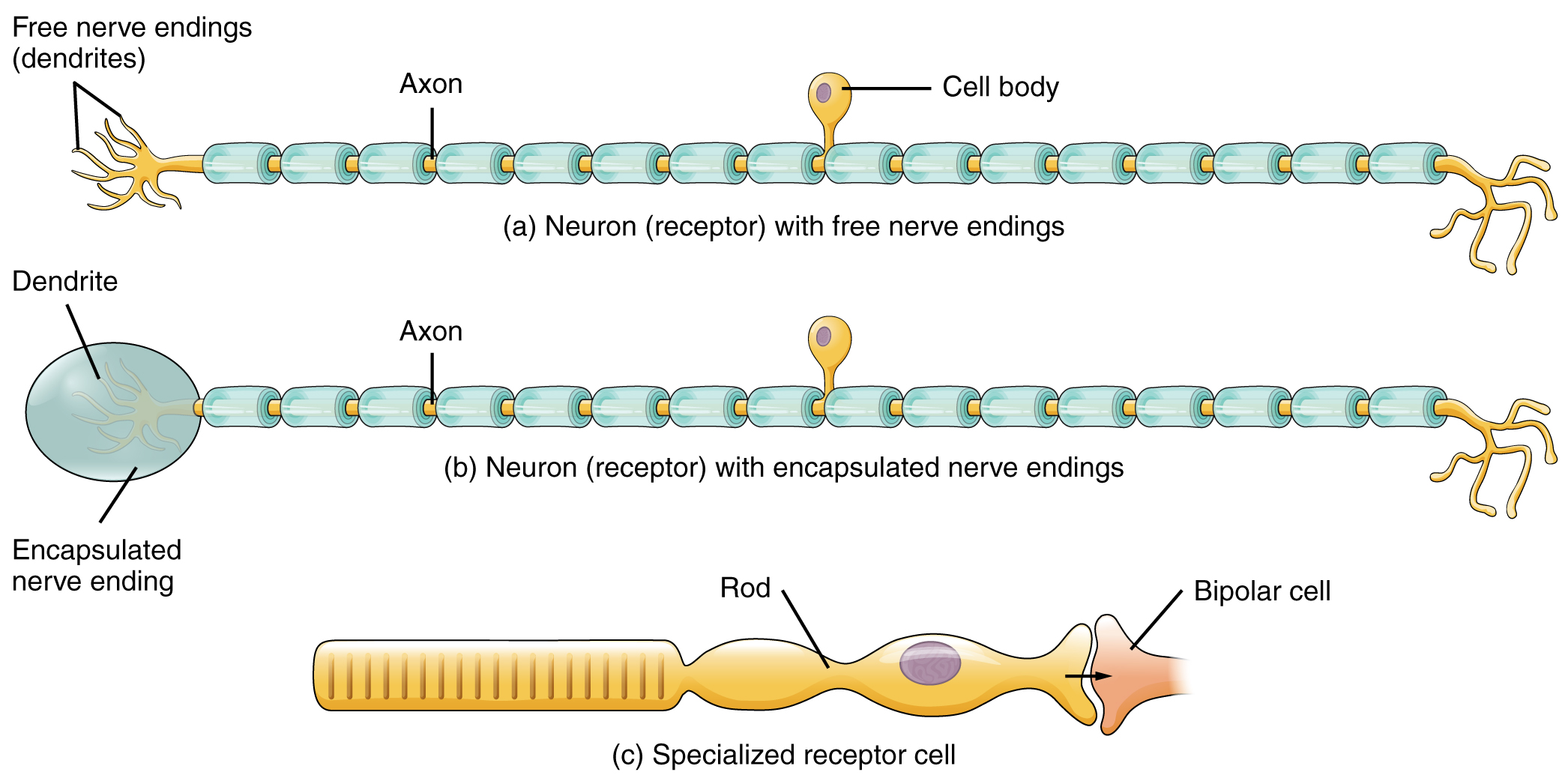
This figure shows the different types of receptors. The top panel shows a neuron receptor with
Nerve Ending. Free nerve endings in skin represent the most important of sensory receptors and include penicillate fibers found in a subepidermal location in hairy skin,125 multiple types of free endings in digital (nonhairy) skin,126 and papillary nerve endings found at the orifice of hair follicles.
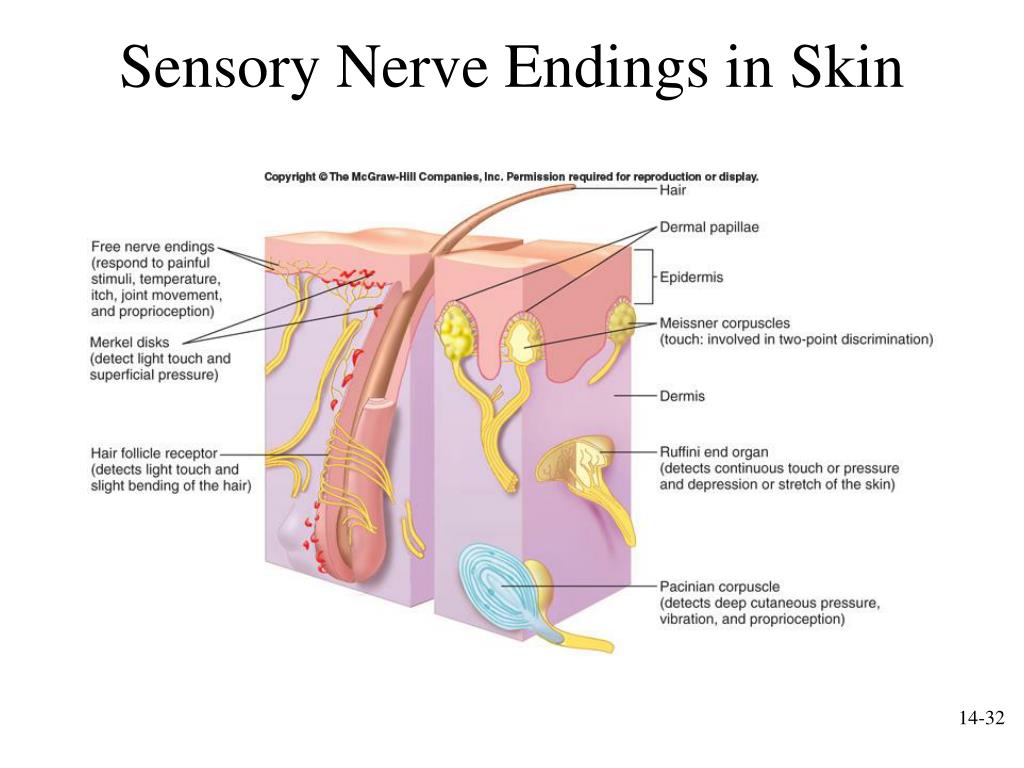
PPT Spinal Cord and Spinal Nerves PowerPoint Presentation, free download ID720313
A free nerve ending, as its name implies, is an unencapsulated dendrite of a sensory neuron. Free nerve endings are the most common nerve endings in skin, and they extend into the middle of the epidermis. Free nerve endings are sensitive to painful stimuli, to hot and cold, and to light touch..
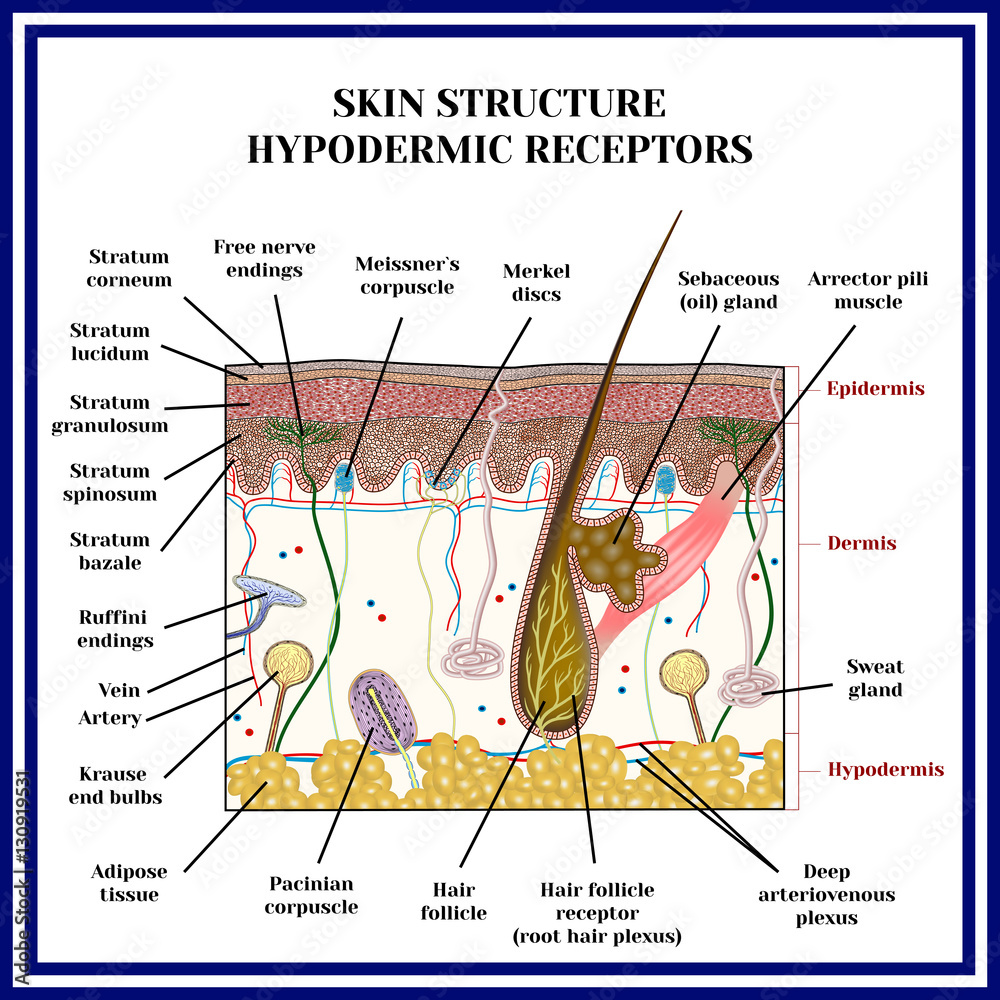
Skin structure. Hypodermic receptors (meissner corpuscle, merkel discs, pacinian corpuscle
The skin is the body's largest and primary protective organ, covering its entire external surface and serving as a first-order physical barrier against the environment. Its functions include temperature regulation and protection against ultraviolet (UV) light, trauma, pathogens, microorganisms, and toxins.

Pin on Mindfulness moments
Free nerve endings are the most copious mechanoreceptors found in the epidermis. They are made up of branched termini of sensory fibers. They typically have minimal or no Schwann cells around their fibers.

PPT PAIN!!! PowerPoint Presentation, free download ID7049009
Pain perception begins with free nerve endings, which are branches of the primary neuron that are unsheathed at the nerve tips but otherwise surrounded by Schwann cells.